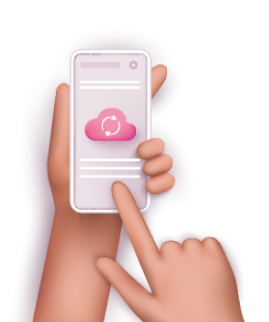As the connected home becomes more complex (the average house now contains 22 connected devices), I believe that context is the next great differentiator. Too many communication service providers (CSPs) are still treating their subscriber homes as carbon copies of one another—and providing customer care to match.
The impact of uncovering context can be a game-changer. It can allow CSPs to make data-driven business decisions about everything from network operations and sales to customer success and technical support.
Your customers are demanding personalized and proactive service. Context can help get you there.
What is “context” in telecommunications (telco)?
So, what do we mean when we say “context” in relation to internet users? The truth is, there’s a lot of data to consider coming from both within and beyond the home. Think about:
• Devices: What devices are being utilized? This includes mobile phones and tablets, desktop computers, laptops, smart TVs, IoT devices and wearables.
• Applications: Different applications have varied demands. What’s necessary for streaming on Netflix won’t be important when your 14-year-old is battling a raid boss.
• Network Conditions: What devices and applications are being used concurrently? Is there neighbor interference or Wi-Fi coverage issues?
• Infrastructure: This includes data gleaned from the whole service delivery chain, from the server and WAN to the CPE, LAN, core network and even the Tier-1 ISP.
In short, when you use the word “context” in telecommunications, you need to consider how subscribers consume the web, the devices and applications they use (plus the interaction between the two), subscribers’ neighboring networks and the underlying infrastructure itself.
What can CSPs do with that context?
Let’s say you can attain all of that delicious context, and you now have a blueprint of each subscriber’s connected home. You can see David on his iPad doing some light browsing on Amazon, Alex making headway on The Legend of Zelda on their gaming setup and Shannon on her laptop, taking part in yet another web conference that probably could have been a meeting. Underneath it all, you can visualize the network conditions—the beating heart made up of all the infrastructure working together to balance latency, bandwidth, packet loss and more.
What can you do with it? Here are three ideas right off the bat.
1. Audience Segmentation
A one-size-fits-all approach isn’t good enough for today’s customer experience. If you know which segment of your subscribers work from home, you can ensure you focus on what’s going to impact web conferences on Zoom, not what would ruin a Mandalorian marathon on Disney+. Segmentation can also be used to create additional categories of users, such as those who are in their critical initial 90 days as subscribers or those who are continually seeing service degradation and may be in danger of churn.
2. Bottleneck Identification
You can find the root cause of any issue when you have context that’s a lot wider than the Wi-Fi alone. Perhaps a new firmware version is impacting the router, or weak infrastructure in a precise location is wreaking havoc on the signal. It could be a challenge with a specific device running legacy software or a third-party application server that has nothing to do with the home at all.
3. Problem Resolution
In telco, speeding up time to resolution is everything. With context, problem resolution can be incisive and targeted to a specific issue. If a channel is choked, context gives you that visibility, and you can quickly implement band steering. If devices need to update, autoreconnect can be initiated in seconds. Your support reps no longer need to take on the role of the Spanish Inquisition, trying to uncover why a problem has occurred before they can even consider a fix.
How can contextual intelligence help telcos?
Now, let’s talk about contextual intelligence in a way that ties in the technology you use and the work that you do with wider organizational goals. No matter the business agenda, contextual intelligence can help make it easier for telco leaders to meet the following metrics.
• Reduce churn. It can provide the insight to proactively support those who are experiencing poor service, reducing the likelihood they’ll find service elsewhere.
• Increase revenues. With context, you could offer subscribers direct upsell opportunities, such as Wi-Fi extenders or larger data packages to meet real-time needs.
• Lower opex. Digitizing interactions in telco can reduce the cost to serve by up to 50% across customer care, maintenance and regular truck rolls.
• Improve average revenue per user (ARPU). You can find out which users are costing the most in maintenance or support. Segmenting can help you find which customers are profitable at a glance.
• Boost satisfaction. Differentiate from the competition by using context to drive customer loyalty. NPS scores will speak for themselves.
I believe that contextual intelligence could be a game-changer for telcos, whether it’s used for gaining a deeper understanding of the subscriber base and their needs or identifying ways to optimize operational costs. It allows telcos to move from a one-size-fits-all strategy to a personalized and holistic approach to subscriber engagement.
Forbes Technology Council is an invitation-only community for world-class CIOs, CTOs and technology executives. Do I qualify?





